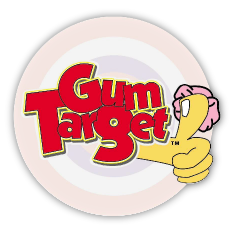Crafting Effective Social Media Campaigns
Understanding the demographics, behaviors, and preferences of the audience, one can tailor the campaign to ensure it resonates well with them. Knowing whether the audience primarily uses Facebook, Instagram, Twitter, or another platform will dictate where to focus efforts.
Content should be visually appealing and informative, using high-quality images, videos, and infographics to capture attention. It should be varied to keep the audience engaged, integrating text posts, visuals, and interactive elements such as polls and quizzes.
Informing the audience about the negative effects of gum litter, using clear facts and statistics, can effectively communicate the seriousness of the problem. Clear explanations of the environmental and financial costs of gum litter, along with practical tips for responsible disposal, help to provide the audience with actionable knowledge.
Including elements that require active participation, such as quizzes, polls, and Q&A sessions, can make the campaign more memorable and impactful. These help to build a connection with the audience and encourage ongoing participation.
Sharing real stories of people or communities affected by gum litter, or highlighting the efforts of those who are making a difference, can humanize the issue and motivate others to get involved. Personal stories make the cause more relatable and show the tangible impact of collective efforts.
Different platforms offer various advantages: Facebook and Instagram are excellent for visual content and community building, while Twitter is useful for immediate updates and reaching a broader audience through trending topics. The selection of platforms should align with where the target audience is most active.
Hashtags such as #GumFreeStreets, #NoMoreGumLitter, and #EcoGumDisposal create a unified conversation and make it easier for users to find and engage with the campaign. A consistent posting schedule is important to engagement without overwhelming the audience.
Actively responding to comments, sharing user-generated content, and acknowledging contributions help to build a sense of community and encourage more people to participate. This fosters a collaborative environment where everyone feels part of the solution.
Mobilizing Communities
Use social media to organize, promote, and manage cleanup events events. Create event pages on popular platforms like Facebook, where interested participants can RSVP and obtain all the necessary details. Highlight the significance of the event, in fostering a culture of cleanliness and responsibility.
 Sharing images and videos from previous cleanup events can serve as motivational material and demonstrate the tangible benefits of participation. Encouraging attendees to share their experiences and photos on their social media accounts further extends the event’s reach and impact.
Sharing images and videos from previous cleanup events can serve as motivational material and demonstrate the tangible benefits of participation. Encouraging attendees to share their experiences and photos on their social media accounts further extends the event’s reach and impact.
Challenges and competitions can motivate community involvement by adding a sense of fun and accomplishment to the cause. A challenge could involve participants posting videos of creative ways they have helped remove gum litter or photos of cleaned-up areas. Competitions could offer small prizes or recognition for the most impactful contributions, fostering friendly competition and public recognition.
Schools, environmental clubs, neighborhood associations, and local businesses often have established networks and can mobilize their members for coordinated efforts. These organizations can help with logistical support, volunteer recruitment, and promotion of events and activities.
Local governments can be encouraged to install more gum disposal bins in public areas, enforce stricter penalties for littering, or support educational campaigns. Demonstrating strong community backing can make it easier to gain governmental support and drive policy change.
Hosting educational workshops and seminars can inform the community about the impact of gum litter and the importance of proper disposal. These events can be held at schools, community centers, or virtually through webinars. Featuring speakers who are experts in environmental science, waste management, or local government can lend credibility and depth to the discussion. Using social media platforms to livestream these events or share recordings can engage a broader audience who may not be able to attend in person.
Establishing a structured volunteer program that includes regular cleanup events, educational outreach, and advocacy efforts can create a sustained impact. Social media can be used to promote these programs, recruit volunteers, and share updates and achievements. Highlighting the personal benefits of volunteering, such as community service hours for students or public recognition for contributors, can further incentivize participation.
Encouraging Behavioral Change
People need to understand the impact of their actions to make informed decisions. Educating the public about the detrimental effects of gum litter on the environment and public spaces is vital. Informative campaigns can highlight how improperly discarded gum causes pollution, harms wildlife, and results in significant cleanup costs for local governments. Clear facts and statistics, presented in an easily digestible format, can effectively communicate the gravity of the situation.
Recognizing and rewarding people and groups who make a conscious effort to dispose of gum responsibly can motivate others to follow suit. Public acknowledgment through social media shout-outs, community newsletters, or local media coverage can highlight their contributions. Incentive programs, such as discounts or small rewards provided by local businesses, can further encourage people to act responsibly.
Collaborations with social media influencers who are passionate about environmental issues can significantly increase the campaign’s reach. These influencers can share the message with their followers, lending credibility and wider visibility to the campaign. S
Installing more disposal bins in public areas makes it easier for people to discard their gum correctly. Strategically placing these bins in parks, shopping centers, and transit stations ensures that there are accessible options for everyone. Distributing small, portable wrappers or containers designed for gum disposal can provide a convenient solution for individuals on the go.
Regular updates on the campaign’s progress and any new developments can be shared through various channels, such as social media, community meetings, and local media. Providing ongoing education and reminders about the importance of responsible gum disposal keeps the issue top of mind for the public. An open dialogue, where community members can share their concerns and suggestions, helps to address any barriers to proper behavior and strengthens the campaign’s effectiveness.
Tracking and Measuring Impact
Platforms such as Facebook, Instagram, Twitter, and LinkedIn provide in-built analytics tools that offer valuable insights into how content performs. These tools can reveal various metrics, including the number of likes, shares, comments, and overall reach of specific posts. Monitoring these metrics helps identify which types of content resonate most with the audience, enabling the campaign to focus on the most effective
High engagement rates indicate that the audience is actively participating and sharing the message, which can broaden the campaign’s reach even further. Tracking these metrics over time can demonstrate whether the campaign is gaining momentum and effectively raising awareness about gum litter.
Surveys, polls, and feedback forms can be distributed through social media channels, email newsletters, or community events. These tools provide qualitative data on public perceptions, attitudes, and behaviors regarding gum disposal.
Select a diverse group of participants to discuss their views on gum litter and the campaign. The feedback from these focus groups can uncover nuanced opinions and suggestions that may not be evident through other forms of feedback.
Before and after cleanup events, take detailed records of the amount and locations of gum litter. Comparing these records over time can provide concrete evidence of the campaign’s impact on reducing gum litter. Involving local governments or environmental organizations in these audits can add credibility to the data and help secure ongoing support for the campaign.
Positive media coverage of the campaign’s milestones and success stories can help reach a wider audience and garner additional support. Regular press releases and media kits containing up-to-date information about the campaign’s impact can facilitate this coverage.



